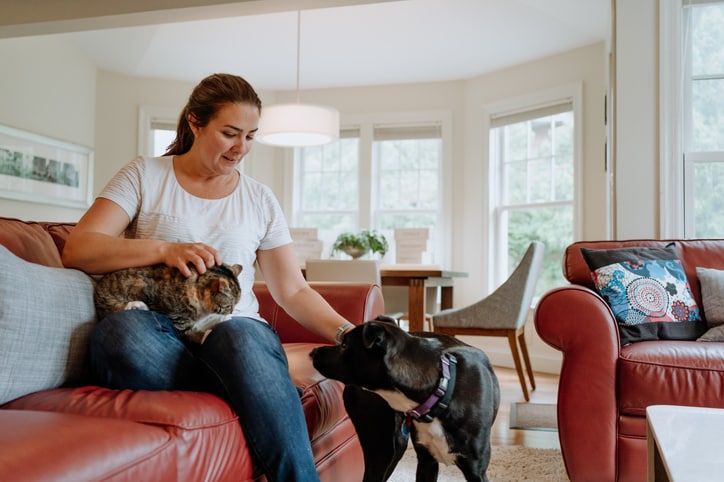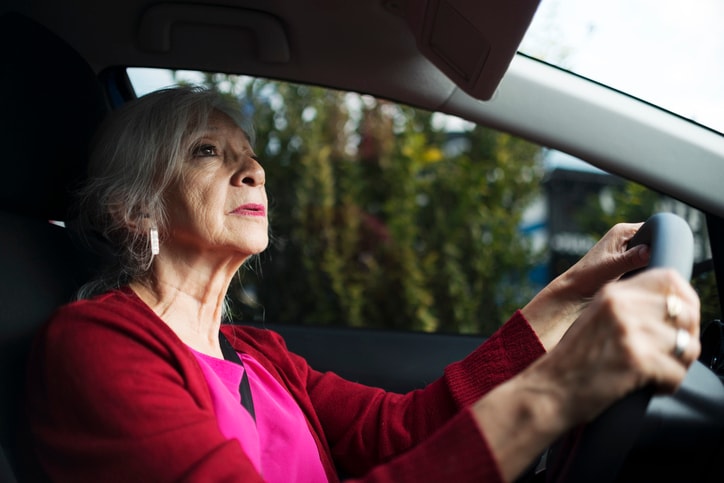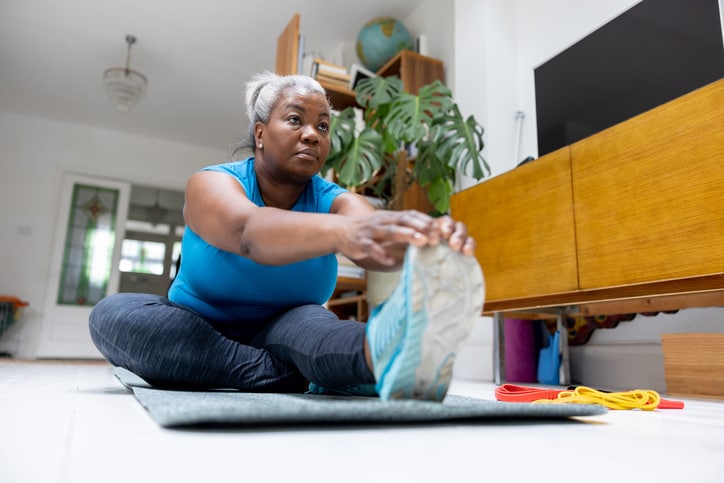We’re honored and excited to share the story of one special family today that are affected by Ehlers-Danlos Syndrome. Beth is a mom and the blogger behind “Our life with Ehlers-Danlos Syndrome,” where she shares the experiences of her and her family. We had some time to connect with Beth and ask her about her experiences with EDS and for some more information about EDS for those who are looking for more information.
Ehlers Danlos Syndrome is a collection of genetic connective tissue disorders in which there is a fault in the collagen. The type of collagen affected, determines the type of EDS: there are more than 6 different types. The most abundant protein in the body, collagen is the glue that holds us together and there are dozens of types of collagen throughout the body. EDS can affect nearly all body systems because collagen is found throughout the body. Wherever there is a fault in the collagen you can have problems: joints are loose and prone to injury/dislocation, skin is fragile and prone to scarring and bruising, blood vessels are weak and stretchy, the digestive system can be particularly vulnerable, the organs, the eyes, even the autonomic and central nervous system are at risk. The symptoms can vary widely, among related family members, others who have been diagnosed with the same type or even over the span of an individual’s lifespan.
How do you get diagnosed with EDS?
EDS is diagnosed by using the Beighton Score and the Brighton Scale, which quantifies the symptoms into simple diagnostic criteria. Any doctor can diagnose EDS, however, most family doctors or pediatricians would be more comfortable sending a suspected EDS patient to a geneticist who is knowledgeable about connective tissue disorders. There is a handful of what are considered ‘experts’ on EDS and they are who should be consulted, if possible. It is not uncommon to see many doctors, be sent to a number of specialists and even have multiple misdiagnoses before finally settling on a diagnosis of EDS. The medical community knows little about EDS, so it can be very difficult to find competent care. However, there are experts and knowledgeable specialists who can help – you just have to keep digging.
Tell us a little bit about your EDS journey
My daughter, Emily, was diagnosed when she was 12 with EDS Hypermobility type and we quickly came to understand that both my 19 year old son and my husband have it as well. Emily had been injured when she was 10 – a bad patellar dislocation – and that started a long downward spiral that left us with lots of questions and few answers. We finally self-diagnosed when she was 11 and put a name to this thing that had invaded our lives. She began using a wheelchair when she was out in public after a bout of RSD in her foot resulting from a bad sprain. While we started a journey to getting a diagnosis, she got sicker and sicker and was basically bed-ridden for months as her headache, blurred vision, fatigue, dizziness, nausea, and pain became extreme.
Once she was diagnosed, almost a year after we put a name to it, the long process of finding effective treatments was started. The first step was to get to a pain management clinic and address her pain and poor sleep. She went on several medications that greatly improved her quality of life. It was about this time that I found the Driscoll Theory and eventually found a doctor who would let us try Diamox. It improved her headache immediately and I credit much of her quality of life today to this one medication. A cervical fusion was being held out as a likely treatment and we have managed to avoid that serious surgery, thanks to the Diamox.
Physical and Occupational therapy, as well as medications to treat her autonomic dysfunction, mast cell reactions, and GI symptoms have all contributed to her quality of life today. Emily is now 16 and doing better. Not great, not 100%, but definitely better than she was 4 years ago. She still is in constant pain and has frequent dislocations and injuries; that part will likely never go away. She is out of the wheelchair and now uses it only for times when she has an injury and cannot walk (she can’t use crutches because of her hypermobile shoulders, elbows, wrists and fingers). Although her beloved gymnastics is gone forever, she has recently been able to return to our local civic theatre stage in a musical – an activity she desperately missed while she was so sick. She teaches music to the little kids at our homeschool co-op and has learned to play the guitar. She plans on becoming a Child Life Specialist and working with children who are facing time in the hospital or challenging medical procedures, knowing that she will have a special connection with those children.
Overall, we feel blessed because she was diagnosed relatively quickly and her diagnosis has led to other family members becoming aware of their own health challenges with EDS. We also feel blessed to be able to advocate for EDS awareness and improve the lives of future generations. Together, Emily and I are writing a faith based book for families and teenagers living with chronic illness, which we hope to have published and this is just one of the beautiful things that have come into our life along with EDS.
We have no idea what the future holds, but we know we will face it together as a family, with the grace of God.
Why did you decide to blog about EDS?
I began blogging during our journey to get a diagnosis. At the time, Emily was getting sicker and sicker – she was essentially bed-bound and was at the mercy of some of the worst symptoms EDSers face. She was too dizzy to stand, was too nauseated to eat and was suffering from a headache that had lasted more than a year at that point. It was terrifying; blogging gave me an outlet so I didn’t go crazy with my thoughts trapped in my head. I needed a place to put a voice to my hopes and fears, to say things I couldn’t say to my family because I needed to be strong for them. Blogging was a vital outlet and has helped me stay sane on this journey.
Once we got a diagnosis, it became important to me to advocate for awareness for not just EDS, but all of the co-morbid conditions EDSers live with, for chronic illness in general and for invisible illness. As Emily has improved, I have continued blogging because I think it is important to put our successes online and not just the challenges.
My blog has also served as a sort of record keeping tool to note the onset of symptoms and events that I might otherwise forget over time. I can go back and refresh my memory whenever I need to and the bonus is that others benefit from me sharing our experiences. It also has been a wonderful reminder of how far Emily has come and how very ill she was when I started blogging.
What were the first symptoms and signs you started to notice in your children?
Although I didn’t know it at the time, the first sign in my children was leg pain (‘growing pains’ is what we were told) when they were toddlers. My son would frequently have leg pains at night, particularly after playing outside in the cold or walking a lot. My daughter not only had even more frequent and severe leg pain at night than my son, but she also had trouble walking for long distances and would often need to be carried or pushed in a stroller. Emily could walk perfectly well and she was amazing at gymnastics; she just tired more quickly than other kids her age. We dismissed it as a problem because she was healthy, active and perfectly ‘normal’ as far as her doctor was concerned.
As the years went on, Emily increasingly struggled with fatigue and frequent injuries. I suspect that both of my children (and my husband, as a child) had many symptoms that they simply viewed as ‘normal’ and so never mentioned: headaches, GI issues, finger pain with writing, blackouts, subluxations and dislocations.
Looking back with what I know now, everything my kids experienced can be explained through the lens of EDS. EDS causes the muscles to fatigue quicker because the muscles are working so hard to keep the joints stable. ‘Growing pains’ is simply what doctors tell parents when there is no easy explanation for their child’s pain. I still struggle with the fact that Emily had a genetic condition that her doctor completely missed, but, the truth is, her symptoms were very subtle unless you were specifically looking for EDS and she really wouldn’t have met the diagnostic criteria for EDS until she actually got sick. So, it is painful to think about but I don’t think she could have been diagnosed much sooner, even if we had been sent to a geneticist.
When did you know to look towards EDS versus other conditions?
Dislocations were the red flag for us. Emily had a bad patella dislocation when she was 10 and, eventually, that was the unavoidable clue – she went from superiorly dislocating her patella by doing a simple handstand to eventually dislocating both knees, ankles, fingers, toes, wrists, hips, ribs and jaw spontaneously and pretty much constantly. Initially, I had been told, when I asked if it could be EDS, that there was no way it was. But, as I kept researching her symptoms, they always led me back to the same place: EDS. While it isn’t strictly necessary to have dislocations to be diagnosed with EDS and you can have a single joint that dislocates and NOT have EDS, when you have multiple joints dislocating spontaneously, there really is no other explanation other than a connective tissue disorder and EDS is the likeliest candidate.
Is it common for people with EDS to get a diagnosis of Fibromyalgia?
Definitely. As I mentioned, it is very common to have multiple misdiagnoses before being properly diagnosed and Fibro is just one of many possible diagnoses. In fact, many EDS experts believe that Fibromyalgia is EDS, so if you know someone who is diagnosed with Fibro, it is distinctly possible they have EDS instead. Then, there are those who have been diagnosed with both EDS and secondary Fibromyalgia, by competent physicians. So, until the experts get to the bottom of this somewhat controversial issue, at the very least we can say that EDS and Fibro are related, perhaps Fibro can be a secondary condition to EDS and, in many cases, are simply one and the same. My advice for anyone diagnosed with Fibro: have a look at the diagnostic criteria for EDS and, if you think you might meet it, get to one of the EDS experts for an evaluation.
Do gastrointestinal problems list irritable bowel or GERD play a part of EDS?
Gastrointestinal problems are a huge issue for EDSers. The entire digestive tract is largely made of collagen, so there can be problems from beginning to end, so to speak. From trouble swallowing to GERD to irritable bowel syndrome to chronic constipation/ diarrhea to gastroparesis to requiring a feeding tube or colostomy, EDS profoundly affects the GI system. Digestion takes an enormous amount of energy: often EDSers will find that eating can trigger autonomic dysfunction symptoms (POTS) that are debilitating.
Why are symptoms so variable with EDS?
There is so little known about EDS, but it is important to remember a couple points…
First, there are more than 6 distinct types of EDS, each with its own specific set of symptoms under the umbrella of overlapping symptoms that apply to EDS in general. So, someone with the Classic Type will have somewhat different symptoms than someone with the Hypermobility Type and that person would have different symptoms than a person with the Vascular Type and so on.
Second, because we are looking not only at one gene being mutated (and we don’t even truly know all of the genes that are affected yet), but also the impact the environment has on the individual, nutrition, viruses, injuries and other medical conditions undoubtedly have an impact on how EDS manifests and each person will be affected differently.
One of the most fascinating questions to me is why some people with EDS are largely asymptomatic and others are bed or wheelchair bound. Once we know the answer to that question, we will start getting a handle on the variability of symptoms. Until then, we just understand that each child in a family can have a distinct set of symptoms, that a person’s own symptoms can vary greatly over a lifetime and that some people with EDS can run a marathon while others will struggle with normal daily activities that most people take for granted.
Do you track your child’s symptoms over time? What do you track and use to track symptoms?
I do not track all my daughter’s symptoms all the time. Frankly, with the number and variety of symptoms she has, it would be overwhelming! I do, however, track symptoms as needed – when a new symptom pops up or an old one becomes troublesome. I am a firm believer in being able to give the doctor data to work with, whether that is a chart or a digital photo or a video. We have kept a food diary, tracked headache symptoms, GI symptoms, pain, calorie intake, mast cell/ allergy reactions, and so on. We have used everything from a chart printed out and filled in by hand to notes taken on a Kindle or Ipod to a pain chart found online. Occasionally, the doctor may have a chart to be filled in. Technology gives us so many options today and the best tools are the ones you will use.
I do think it is helpful to teach kids to be aware of their symptoms and know how to track them. As kids transition from childhood to adulthood, we have to equip them with the skills to manage their own medical care. And, symptom tracking is one of those skills.
How would you say EDS affects your family’s lifestyle and your child’s lifestyle?
My daughter was a gymnast before EDS came into our lives and she will always feel it was stolen from her. Once Emily got so terribly ill, it felt like we lost everything – it was pretty bleak there for awhile. Honestly, I felt like we had been robbed of our busy, ‘normal’ life and it was hard to watch others with healthy kids take their lives for granted. But, we have pieced together a new life and have learned how to carry on by focusing on what she can do rather than what she can’t do. Today I feel more blessed than robbed, as crazy as that may sound.
When she was bed-ridden, our lives slowed down and revolved around her – getting her better, making sure she had all the care and treatment she needed. Today, EDS is a little more peripheral in our everyday life, but still very present. Our lives now more or less go with the ebb and flow of how EDS is manifesting at the moment. If it is a high pain day, we can adjust our plans. If she is feeling well, she is able to do more. If she does a strenuous activity, we know to plan a few days of down time afterwards so she can recover. We are always adjusting plans to fit with how she is feeling but we try hard to allow her to be as normal as possible.
One blessing we have found, is that we have the opportunity to help our kids make choices about career decisions that will be as harmonious as possible with living with EDS, rather than – as so many adults who chose their careers not knowing they had EDS – being at its mercy later in life. For instance, choosing a career that involves heavy lifting and repetitive tasks, would lead to problems and they are in a position to avoid that type of lifestyle.
With guidance, our kids also are able to make wise choices about the activities they participate in now, rather than looking back as an adult and seeing the damage that sports caused. Letting them learn their own limitations and to evaluate their choices means they can learn to make good decisions. This is a skill they will use for the rest of their lives. For instance, competitive sports is often not recommended for kids with EDS. But, you can and should steer them towards activities they can do and love. My biggest regret is that we allowed our daughter to put so much of her identity in being a gymnast – when she suddenly lost the ability to be one, the loss was extremely painful.
My advice, if at all possible, is to start supplementing your child’s activities now with a broad range of activities he or she enjoys and can excel at. Having a variety of individual sports/fitness activities available (like swimming, bicycling, yoga, pilates, carefully done martial arts, Tai Chi), as opposed to or at least in addition to, competitive sports, as well as more cerebral, creative activities like art, music, chess, legos, computer games and so on, will mean your child’s identity won’t be wrapped up in just one. Filling the void of not being able to do a favorite activity with fun, interesting activities that are enjoyable will help them not only forget the void exists but will teach them to make healthy decisions and will give them a measure of joy that is essential in mental health. It is much easier to part with a beloved activity if there are other equally enjoyable activities to replace it.
About Beth
Beth a mother and blogger behind ”
Our Life with Ehlers-Danlos Syndrome
,” subscribe to her blog, check out her
or follow her on
.






